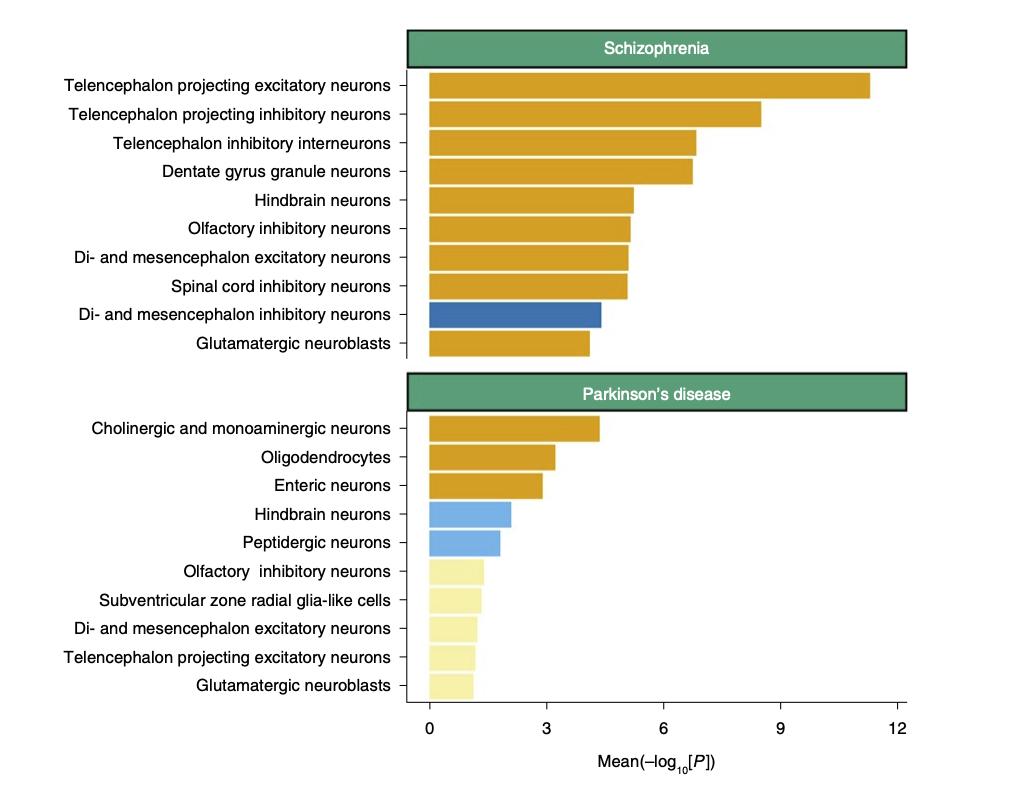by Hakon Heimer
13 August 2020

It is well known that Parkinson’s disease kills specific neurons that control movement, but a study from a Swedish-led international team fingers other suspects: brain cells called oligodendrocytes as well as cells in the gut called enteric neurons, and these may play a role even before the hallmark movement neurons degenerate.
This is only one of the insights that comes from an innovative research approach that combines the complex “big data” from genetic studies with new techniques to zoom in on the molecules of single cells.
In a study in the May 2020 Nature Genetics, the researchers explored the cell types affected by the genes implicated in more than a dozen different brain-related genome-wide association studies (GWAS). These methods can take scientists one step closer to discovering how the genetic variants disrupt the biology and how the diseases may be prevented or treated, the authors say.

The research is led by psychiatric geneticist Patrick Sullivan and neurobiologist Jens Hjerling-Leffler, both at the Karolinska Institute in Stockholm. The researchers first use the GWAS data to look for clues in the brains of mice. Then they follow up to confirm their findings in human brain tissue.
In this study, co-first authors Julien Bryois and Nathan G. Skene and their colleagues looked at results of human genetic associations for 18 brain-related traits, including neurological and psychiatric disorders, as well as cognitive traits, such as IQ.
They compared this to maps of gene expression—the production the critical molecules of the body from the DNA blueprint—in 39 different types of mouse nervous system cells that are also found in humans.
Hjerling-Leffler’s group has done extensive single-cell surveys of mouse brain RNA, the key intermediary molecule that carries the blueprint design into the cell’s machinery for making proteins and other molecules. By searching for RNA corresponding to genes involved in diseases, the researchers can identify cell types where these genes are active.
Overall, they found that the cell types most associated with psychiatric disorders, such as schizophrenia or bipolar disorder, are a different group from those that appear vulnerable to neurological disorders, such as Alzheimer’s or Parkinson’s diseases.
In their analysis, genes linked to Parkinson’s disease stood out.

Surprising cells become Parkinson’s suspects
“As expected, we found that dopaminergic neurons were associated with Parkinson’s disease. More surprisingly, we found that oligodendrocytes and enteric neurons also play an important role in the disorder,” Sullivan said in a press release from the University of North Carolina at Chapel Hill, where he also leads the Center for Psychiatric Genomics.
The finding in mouse oligodendrocytes was then supported by RNA-seq in single human brain cells from people who had died with Parkinson’s.
“Interestingly, upregulated genes in the early stages of the disease were already enriched in oligodendrocytes, suggesting that oligodendrocytes are affected first, and therefore, could be an attractive therapeutical target,” wrote Bryois in a tweet.
Within the psychiatric disorders, there was no clear difference between the cell types (projecting excitatory and inhibitory neurons) implicated for the individual disorders. However, for neurological disorders, the evidence suggested that specific vulnerable cell types are different between the diseases.
With sets of data this large and varied, there are many other relationships that can be explored and that might lead to insights in research or treatment.
Reference
Bryois J, Skene NG, Hansen TF, Kogelman LJA, Watson HJ, Liu Z; Eating Disorders Working Group of the Psychiatric Genomics Consortium; International Headache Genetics Consortium; 23andMe Research Team, Brueggeman L, Breen G, Bulik CM, Arenas E, Hjerling-Leffler J, Sullivan PF. Genetic identification of cell types underlying brain complex traits yields insights into the etiology of Parkinson's disease. Nat Genet. 2020 May;52(5):482-493. May 2020. Epub 2020 Apr 27. PMID: 32341526

